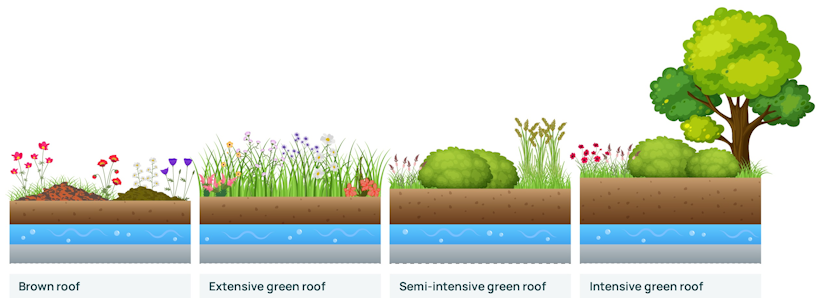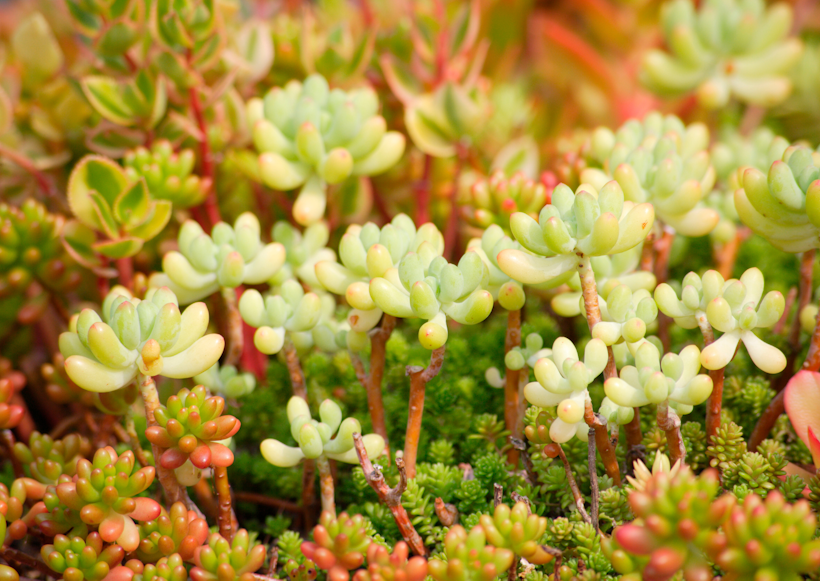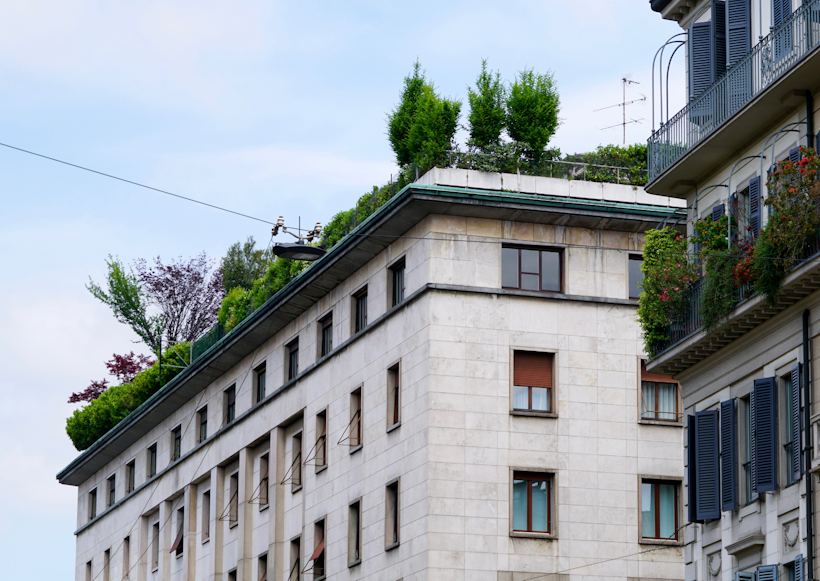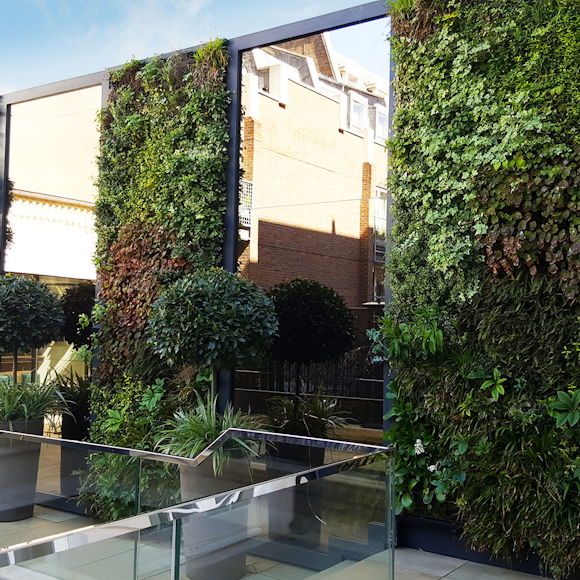As urban expansion continues to absorb the habitats of our wildlife, and effect the health of the planet, it’s no surprise that green roof systems are growing rapidly in popularity.
Green roofs are a great environmental solution for urban areas, serving many benefits including reduced ambient temperatures, improved air quality, structural protection, and habitats and nutrients for wildlife.
However, due to their location, green roofs are exposed to a variety of adverse weather conditions such as wind, frost, rain, and heat – which can have a negative impact on the longevity and effectiveness of the roof if the right plants aren’t selected. Selecting hardy plant species that can withstand these tricky UK weather conditions is paramount for attaining a healthy green roof that will achieve the above environmental benefits.
So, our team of horticultural experts have compiled this helpful guide on which plants are best suited to green roof systems.
What are the different types of green roof systems?
Extensive green roofs
Tend to have lower biodiverse value, but also come with minimal maintenance. Mostly used domestically. Key features:
- Shallow substrate depth (2-6 inches)
- Typically pre-planted
- Modular or component
- Lower biodiverse value
- Zero to low maintenance
Intensive green roofs
Also known as a roof garden, this is the most 'involved' roof type which can be designed to be like a garden environment. Key features:
- Roof garden
- Deep substrate (1ft)
- Wide range of plants to choose from
- Typically component build-up
- Huge scope for design
- Regular maintenance required
Semi-intensive green roofs
Leaning towards roof gardens, but without the weight of an intensive roof. You have greater design scope, and these roofs can also be used recreationally. Key features:
- Deeper substrate (4-8 inches)
- Typically component build-up
- Ideal for designed roof (aesthetics)
- Lower biodiverse value if for recreational use
- Periodical maintenance
Brown/ biodiverse green roofs
Commonly known as 'brown roof', this type of living roof replicates biodiverse brownfield habitats with an intensive organic substrate. These are usually for the purpose of improving biodiversity or meeting environmental standards with a roof that is not overlooked, and your client requires minimal maintenance. Key features:
- Shallow soil layer of at least 2 inches
- Pre-planted or left to naturally seed (colonisation)
- Log revetments
- Recycled aggregates to provide additional micro-habitats
- Modular or component
- Zero to low maintenance

What plants are best for each type of green roof system?
Plants for extensive, semi-intensive, and biodiverse green roofs
Extensive, semi-intensive, and biodiverse green roofs all have a shallow substrate depth, meaning they are more suited to shallow-rooted plants, sedum, moss, herbs, and grasses. Some plants we recommend for these shallow-soiled green roofs are:
Armeria: A compact Evergreen perennial with long-stalked, dense clusters of small cup-shaped flowers. Native to the UK, these plants are great pollinators for local bees, and look beautiful in the spring and summer months when in full bloom.
Thymus: A genus of low-growing, hardy perennial herbs. These fragrant evergreen herbs bloom with small pink, white, or purple flowers in the late spring and early summer months. These plants can be harvested all year round to be used in cooking and provide a great source of pollen for bees.
Oregano: A small, herbaceous subshrub with multiple-branched stems that can grow up to 20-80cm tall. This woody evergreen produces tiny white, pink, or purple flowers which are very attractive to pollinating bees. Similar to the thymus genus, these plants can also be harvested for use in cooking.
Sedum: A genus of small fleshy-leaved perennial succulents that provide hardy, air-purifying coverage all year round. These attractive evergreen plants produce small star shaped, nectar-rich flowers in the summer and autumn months that attract pollinating insects. Their succulent leaves also help to improve the water attenuation green roof systems, reducing the need for maintenance.
Saxifraga: A genus of hardy evergreens that form a compact mat-like layer of foliage across shallow substrate green roofs. These herbaceous plants produce star shaped pink, white, or yellow flowers in the spring and summer months perfect for pollinating insects.

Plants for intensive green roofs
Intensive green roofs have much a deeper substrate, meaning they are well suited to plants with both small, and deep root systems such as trees and shrubs. The deep substrate base allows for a greater variety of contouring species to be planted, creating a textured environment, and can house built structures such as pergolas or water features. This not only creates diverse habitats for wildlife, but also a biophilic haven for people to reconnect with nature in. Some plants we recommend for intensive green roofs are:
Escallonia: A genus of evergreen shrubs that produces clusters of white, pink, or red flowers in the summer to autumn months. These hardy plants can grow 30m in both height and spread providing a full coverage shelter for burrowing insects and a key source of nectar for pollinating bees and butterflies.
Carex: A Vast genus of evergreens that boast beautiful strap-shaped leaves and spikes of tiny green or brown flowers. These hardy plants suit wetter environments and can provide a key source of fodder and forage for wildlife when planted near retention areas that produce water bodies in the wetter months.
Erigeron: A robust family of low-growing annuals, biennials, and perennials. These clump-forming evergreens produce daisy-like flowers in the summer months that provide an essential source of pollen for insects and bees.
Alliums: A genus of bulbous perennials with long flowering seasons that boast bright purple, pink and white pompom flowers. These ornamental plants are a great source of nectar for pollinating bees, providing flowers throughout the spring and summer months.
Lavender: A long lasting, fragrant perennial that produces vibrant purple flowers in the late spring and summer months. This aromatic evergreen shrub can grow up to 2 feet tall, and their flowers are rich in nectar, attracting bees, butterflies, and other pollinators.
Rosmarinus: A woody, long-lasting, evergreen shrub that takes on a bush-like appearance, providing texture and coverage to a green roof. This aromatic perennial herb has needle-like leaves that produce essential oils, attracting butterflies, bees, and other pollinating insects.
Blechnum spicant: Also known as hard fern, this perennial evergreen is characterised by tough, leathery ladder-shaped fronds. This hardy plant offers year-round coverage, providing shelter and shade for burrowing insects and animals. Hard fern thrives in wet areas such as retention dips that create water bodies in the wetter months.
Cosmos: A genus of annual plants that produce colourful, daisy-like flowers in the summer and autumn months, attracting birds and pollinating bees. Compact varieties can grow up to 2 feet tall, while tall varieties can grow up to 4 feet tall, adding texture and dimension to the design of a green roof.
Verbena: A genus of annual and perennial herbaceous or semi-woody flowering plants. Used as bedding and border plants, and popular for their colourful and abundant flowers produced all summer long, these plants are a magnet for pollinating insects such as bees, butterflies, and hoverflies.

Green Roofs by Viritopia
As you can tell, we’re huge fans of green roof systems at Viritopia. In fact, we’ve installed over 100 million plants since we began experimenting with green roof systems in 2005. Whether you’d like to discuss the benefits of green roof systems further or would like to discuss your project requirements with an expert, contact us at Viritopia today.

